Top Photo: Pickerel frog (Lithobates palustris, formerly Rana palustris).
Pickerel frogs are calling from the wetlands. I saw several on the path in Catch the Wind, Explore the Wild, and on the service roads after the chilled rain during the second week of March. A few were flattened by vehicles. Some apparently survived and made it to the water. More frogs have joined the chorus this week.
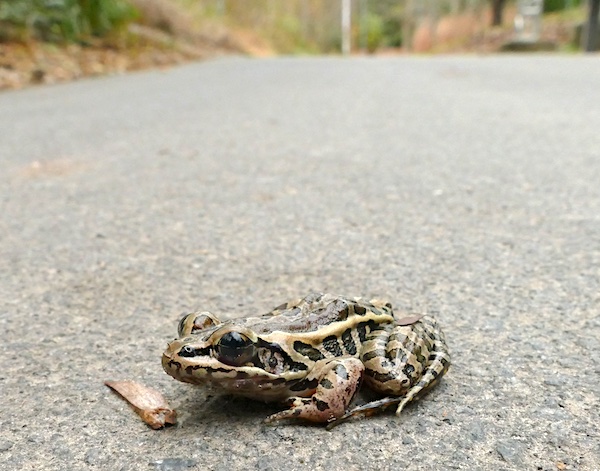

One of the two larger trees in the following photo has been struck by lightning, the pine at center left. Notice the two reddish stripes running halfway down the tree’s trunk.
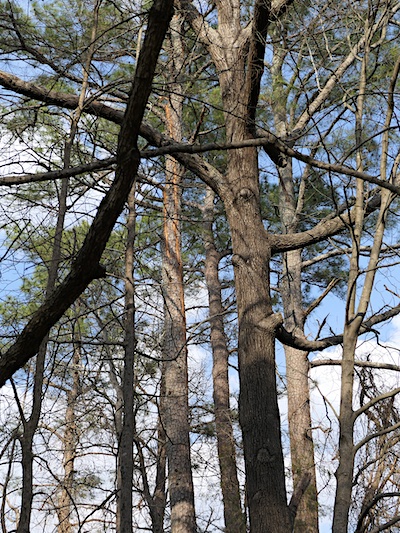
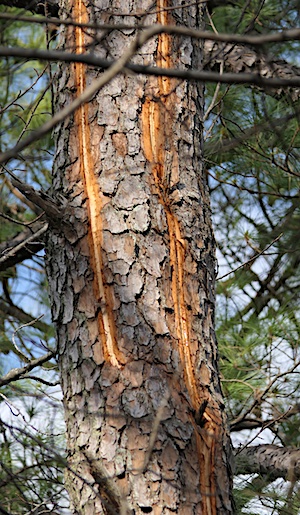
This tree may have gotten off easy. Depending on the power of the bolt, the tree could have spilt in half, or even exploded from the sudden heat and instantaneous boiling of the tree’s sap as the bolt made contact. We’ll have to keep an eye on this tree to see what the long term effect will be. It could very well die a slow death.
A muskrat was spotted by sharp-eyed Matt (Special Events) at the base of the Floating Walkway. I’ve seen muskrats in the wetlands before, but it’s been more than a few years. I think the lack of cattails may be one factor. Though they opportunistically munch a variety of submergent and emergent aquatic plants, they particularly like cattails. We do not have cattails growing in the wetlands.
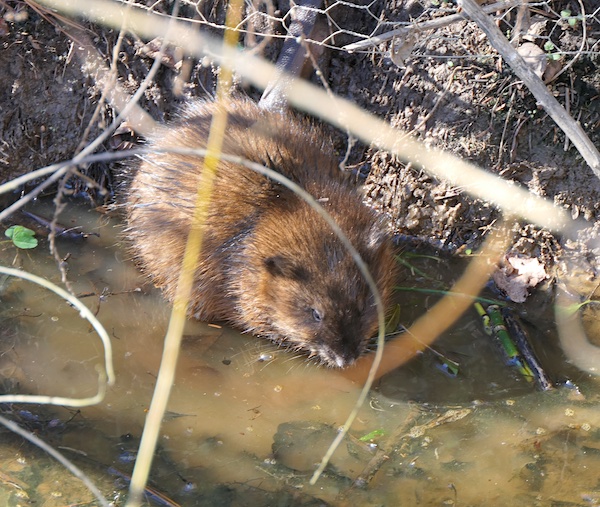
With the many plantings and numerous volunteer plants growing alongside the Floating Walkway, it will be interesting to see if this muskrat stays for a while. A young human visitor saw the little aquatic rodent the following day. And there have been daily sightings since.
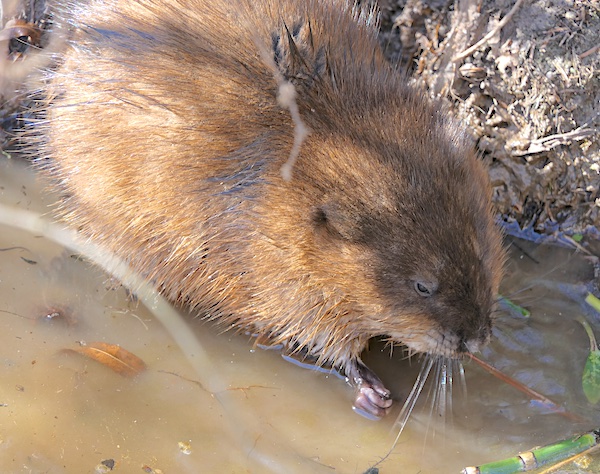
White-breasted nuthatches aren’t seen on the ground often. The one pictured here was in the red wolf enclosure vigorously pecking away at something on the ground. The object of its attention looked to be a cocoon. I didn’t see the nuthatch discover the cocoon but imagine it perhaps came across it in a tree and knocked it to the ground. If it is a cocoon, which seems most likely, it looks to be a large silk moth.
We all know what’s inside a silk moth cocoon; a big fat, juicy moth pupa, just the thing a nuthatch would attack with the intensity this nuthatch was showing. Cocoons are tough to break into, but the reward is considerable.
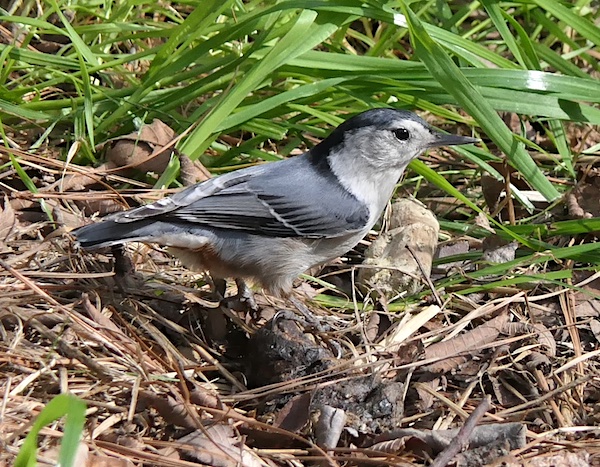


And finally, two northern rough-winged swallows were working the wetlands on the morning of 15 March swooping and diving for aerial insects. Hopefully, tree swallows are not far behind.
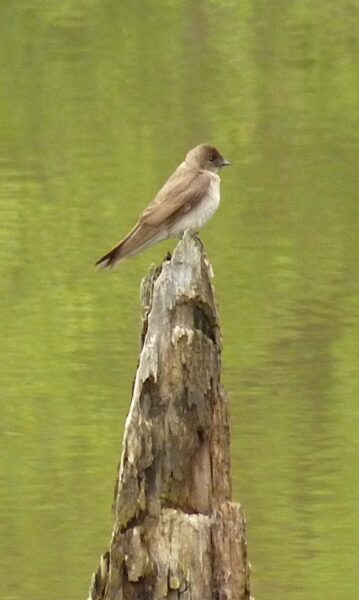
There’s always something interesting going on in the “wild,” get out there and have a look yourself!
Ranger Greg